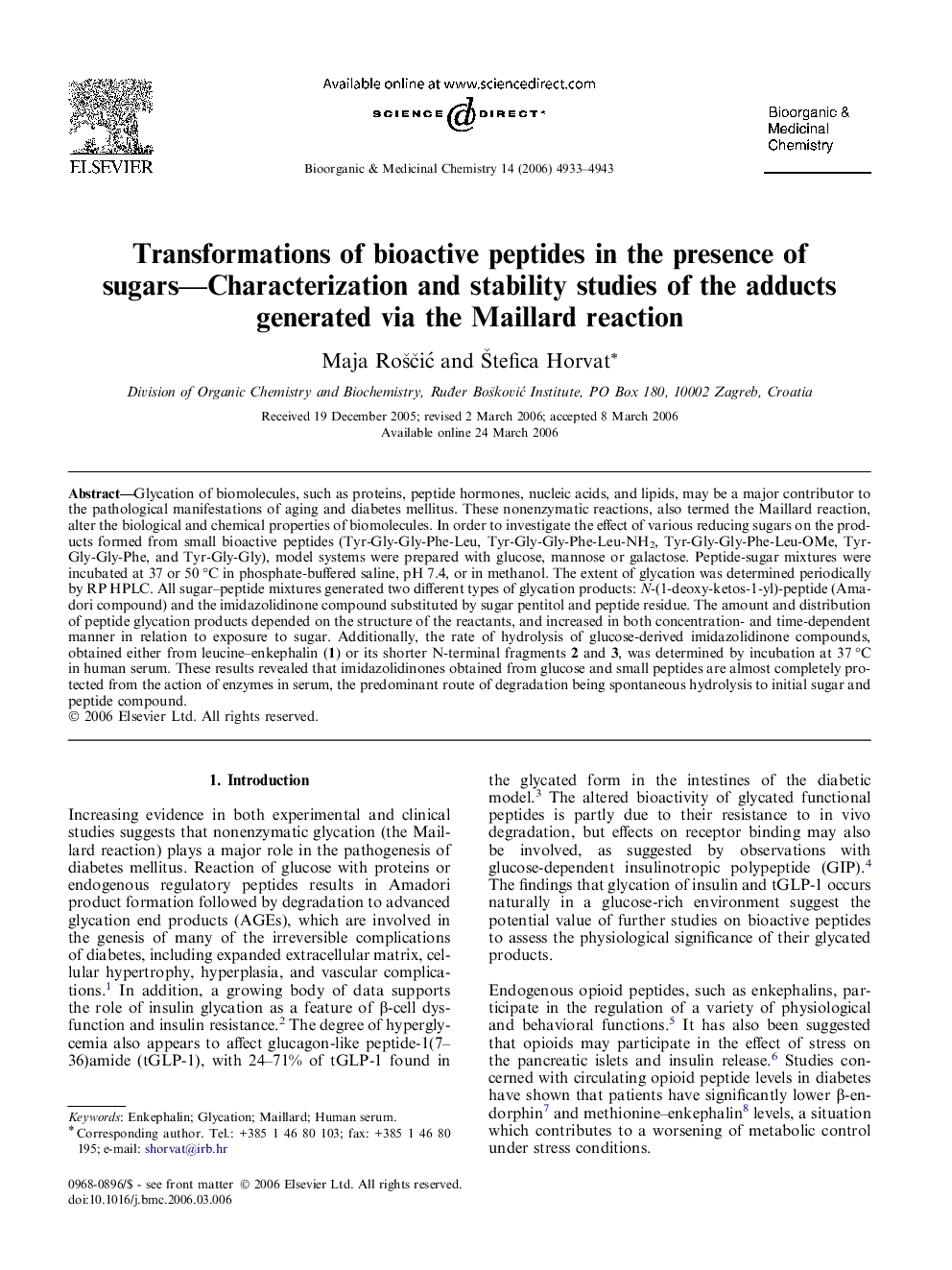| کد مقاله | کد نشریه | سال انتشار | مقاله انگلیسی | نسخه تمام متن |
|---|---|---|---|---|
| 1365481 | 981562 | 2006 | 11 صفحه PDF | دانلود رایگان |

Glycation of biomolecules, such as proteins, peptide hormones, nucleic acids, and lipids, may be a major contributor to the pathological manifestations of aging and diabetes mellitus. These nonenzymatic reactions, also termed the Maillard reaction, alter the biological and chemical properties of biomolecules. In order to investigate the effect of various reducing sugars on the products formed from small bioactive peptides (Tyr-Gly-Gly-Phe-Leu, Tyr-Gly-Gly-Phe-Leu-NH2, Tyr-Gly-Gly-Phe-Leu-OMe, Tyr-Gly-Gly-Phe, and Tyr-Gly-Gly), model systems were prepared with glucose, mannose or galactose. Peptide-sugar mixtures were incubated at 37 or 50 °C in phosphate-buffered saline, pH 7.4, or in methanol. The extent of glycation was determined periodically by RP HPLC. All sugar–peptide mixtures generated two different types of glycation products: N-(1-deoxy-ketos-1-yl)-peptide (Amadori compound) and the imidazolidinone compound substituted by sugar pentitol and peptide residue. The amount and distribution of peptide glycation products depended on the structure of the reactants, and increased in both concentration- and time-dependent manner in relation to exposure to sugar. Additionally, the rate of hydrolysis of glucose-derived imidazolidinone compounds, obtained either from leucine–enkephalin (1) or its shorter N-terminal fragments 2 and 3, was determined by incubation at 37 °C in human serum. These results revealed that imidazolidinones obtained from glucose and small peptides are almost completely protected from the action of enzymes in serum, the predominant route of degradation being spontaneous hydrolysis to initial sugar and peptide compound.
Glycation—a sweet hazard. Mechanism of formation in correlation with analysis in human serum improved our understanding of the underlying chemistry in the Maillard reaction.Figure optionsDownload as PowerPoint slide
Journal: Bioorganic & Medicinal Chemistry - Volume 14, Issue 14, 15 July 2006, Pages 4933–4943